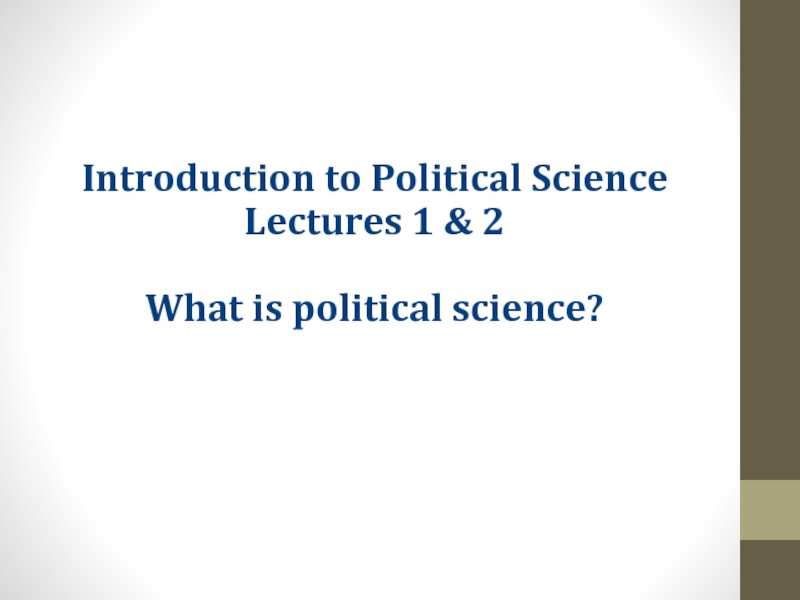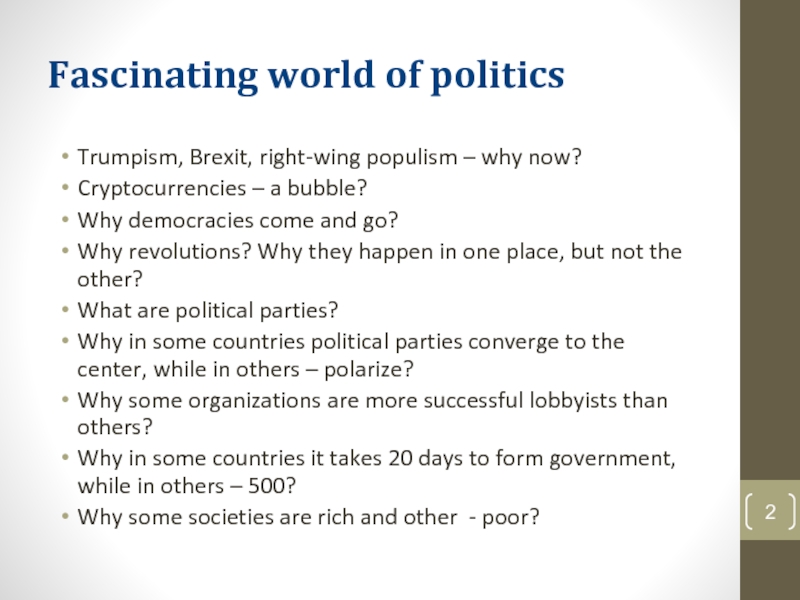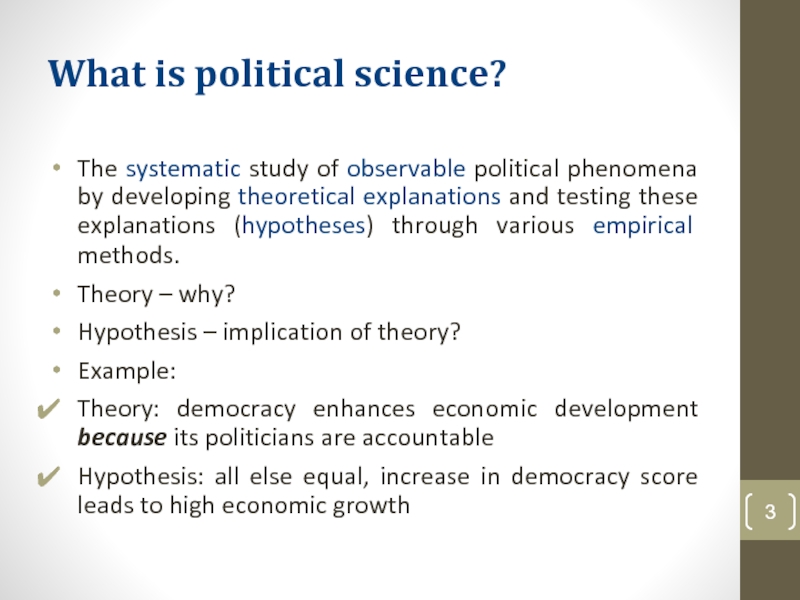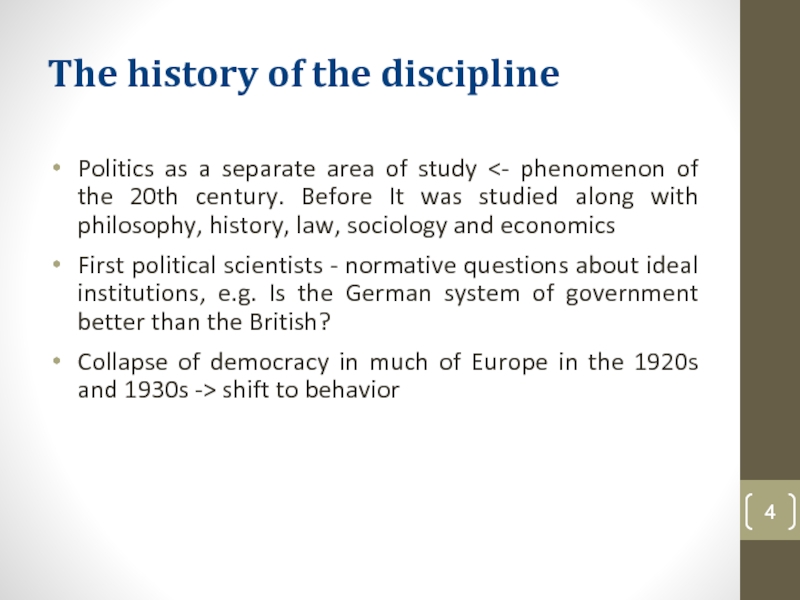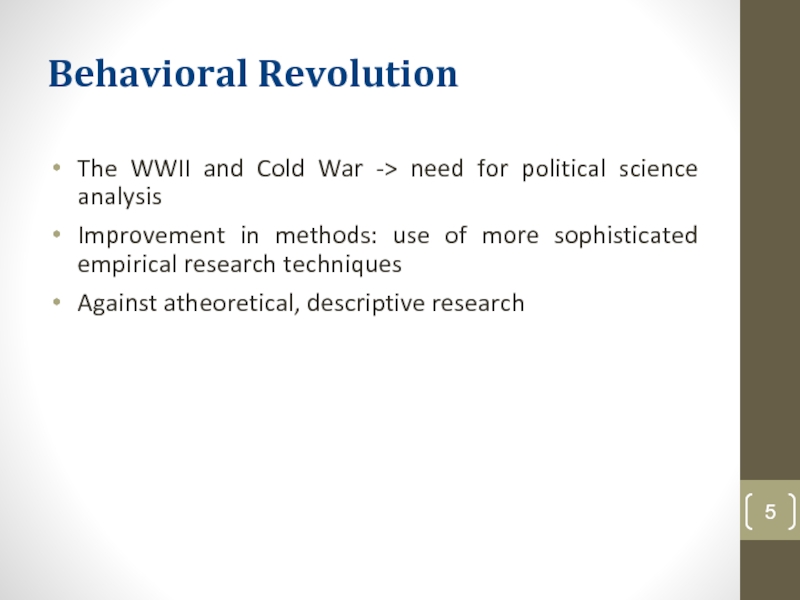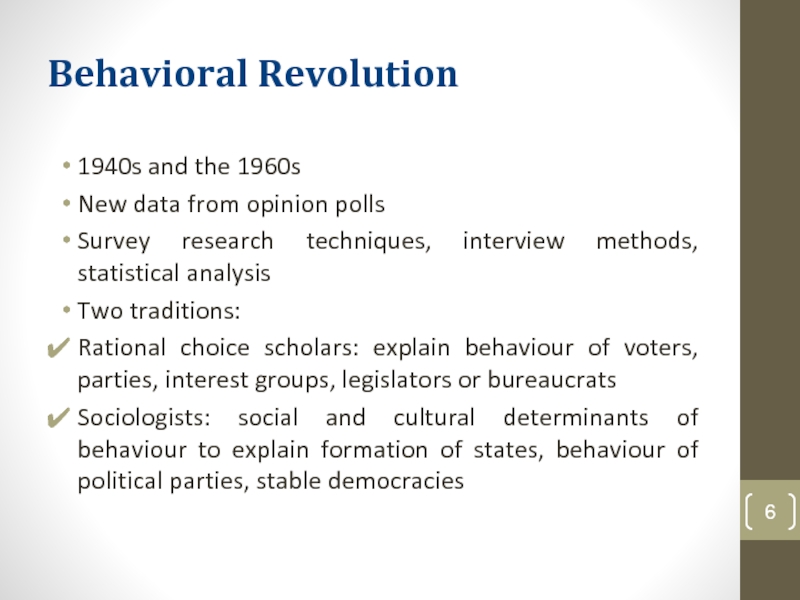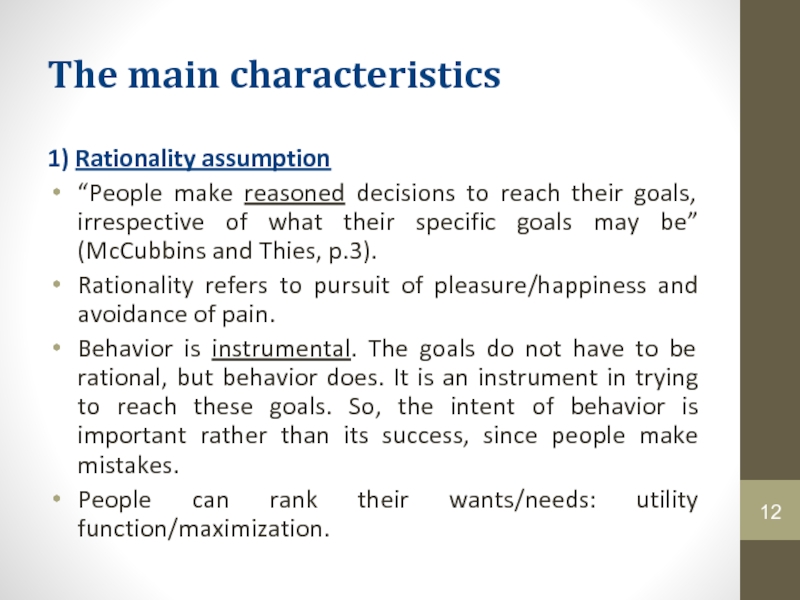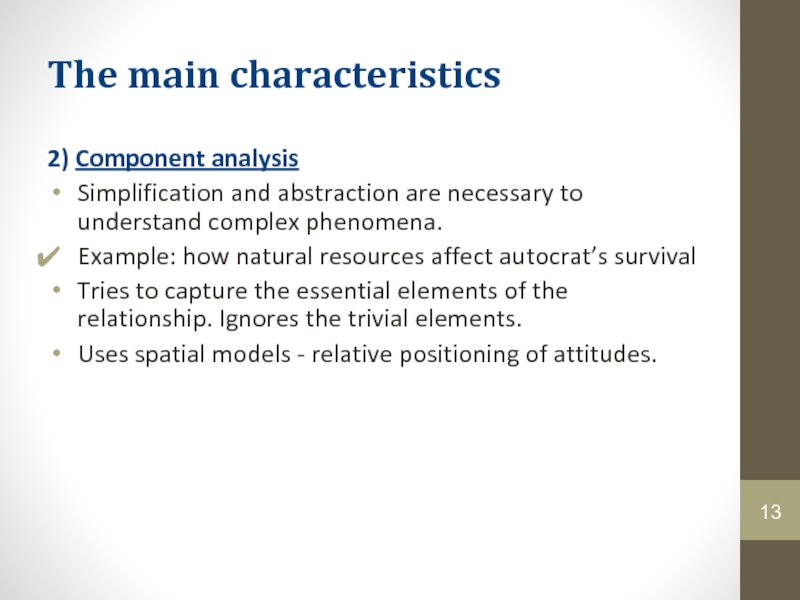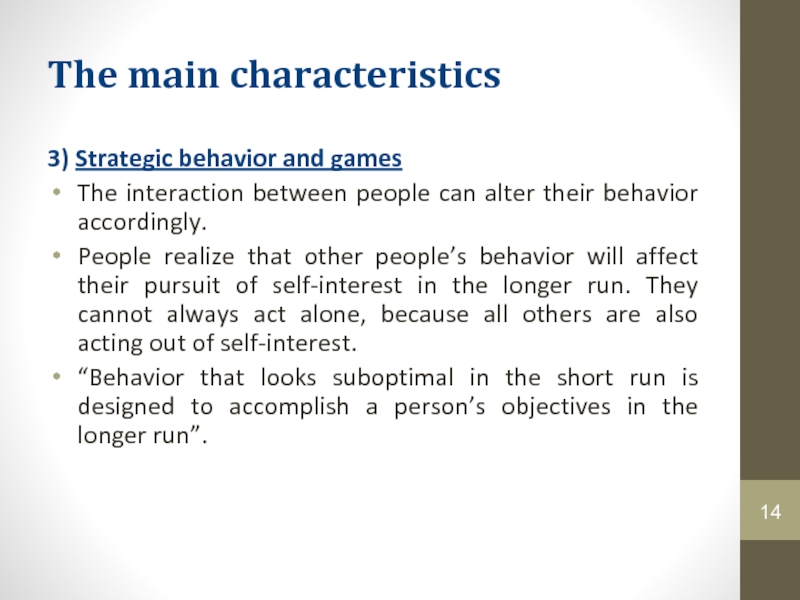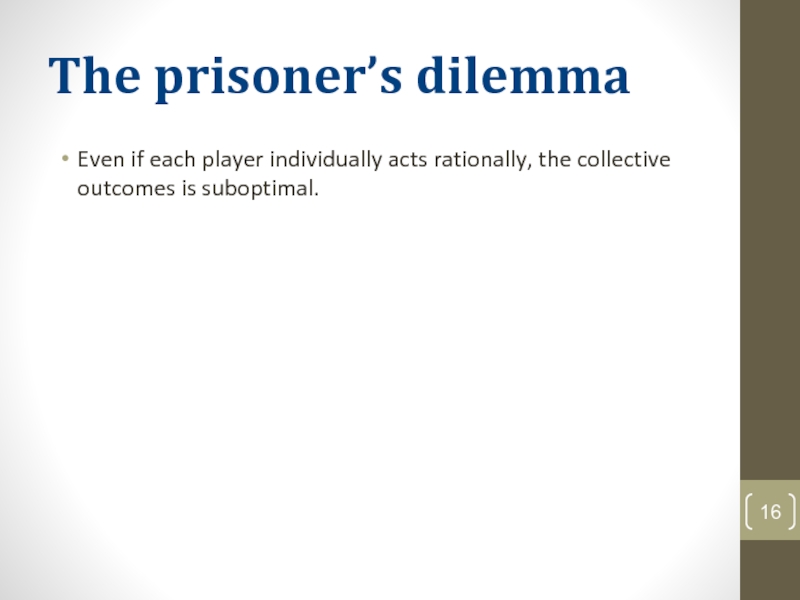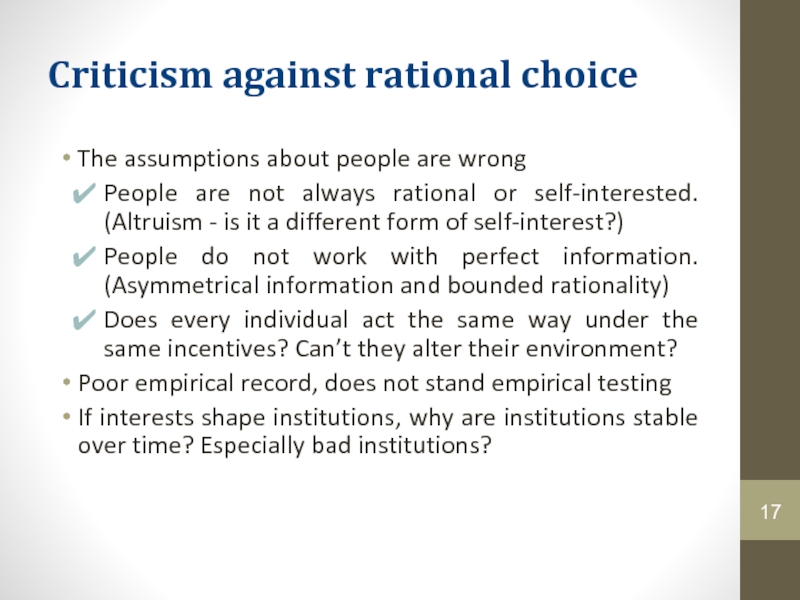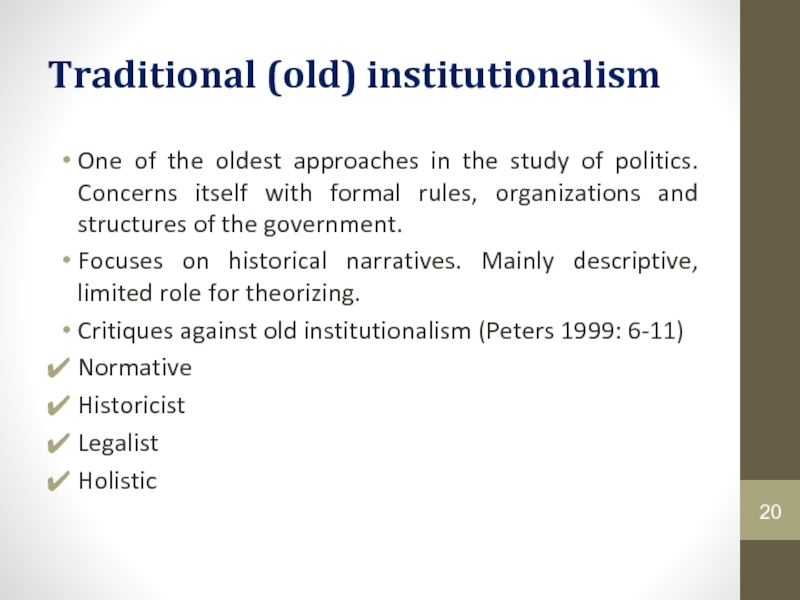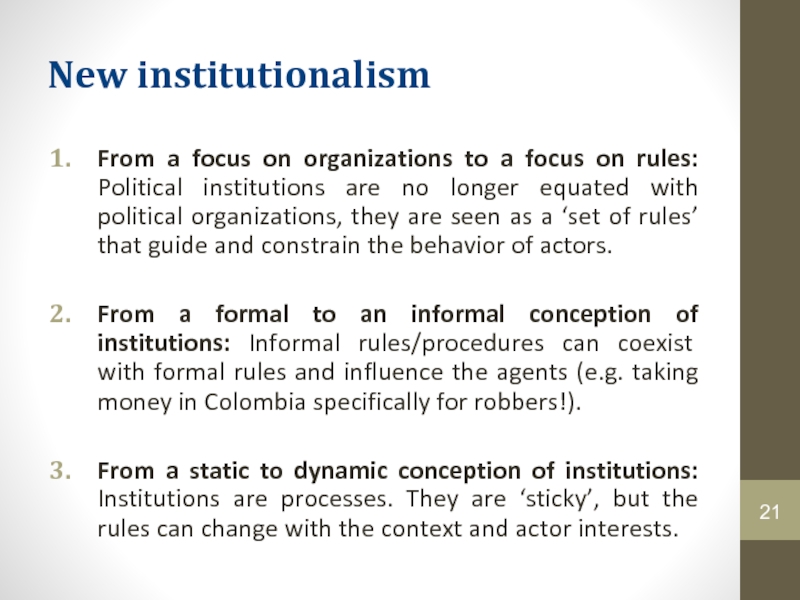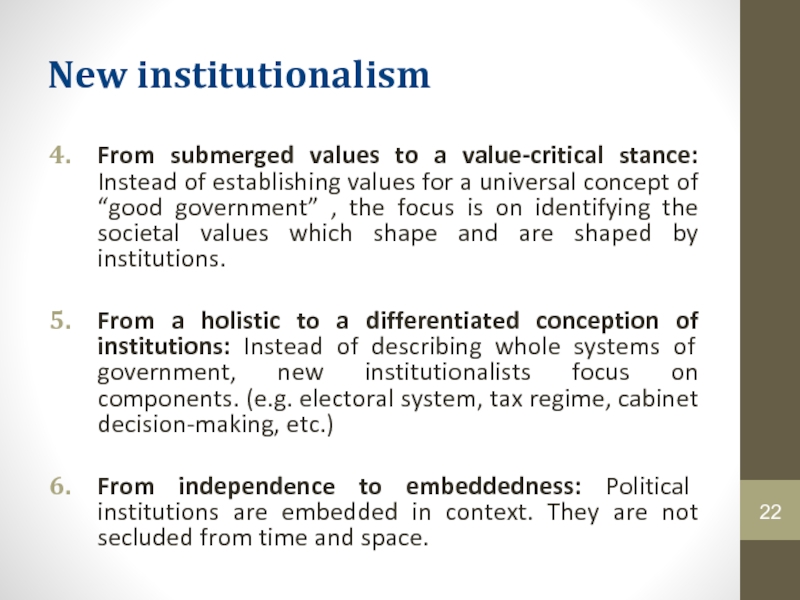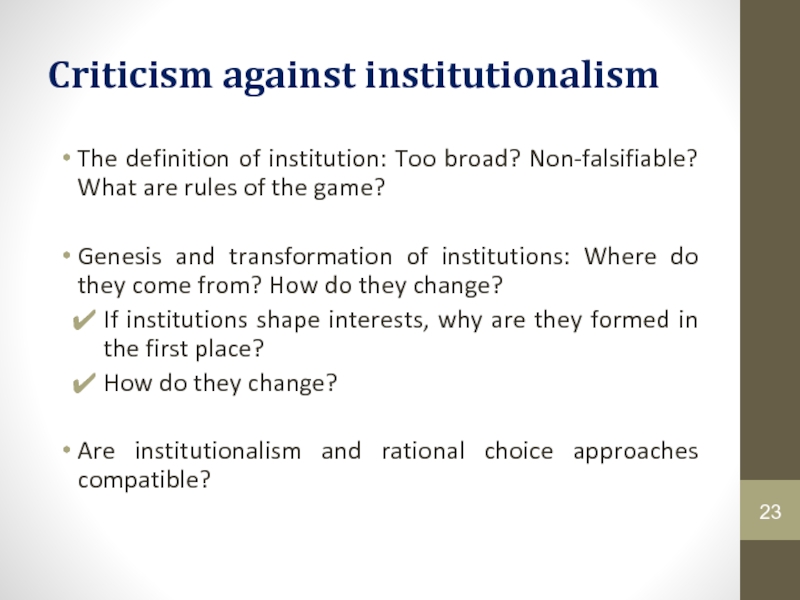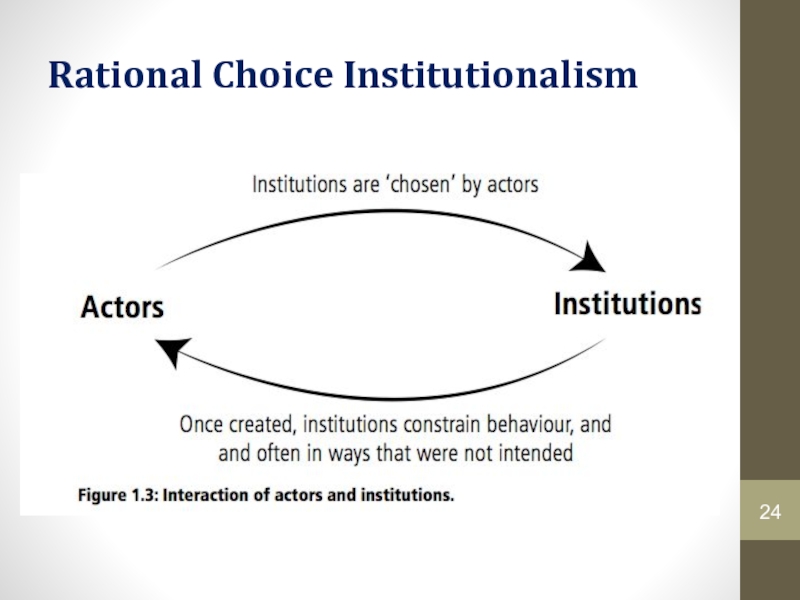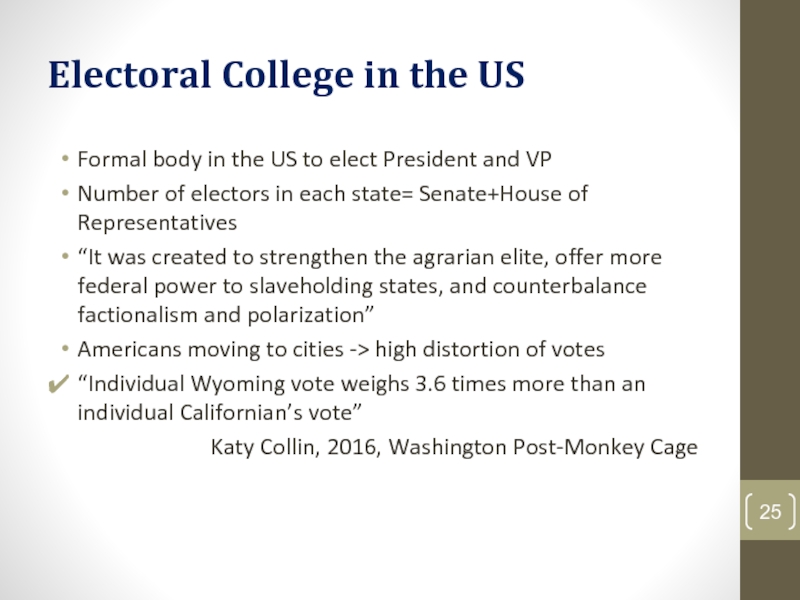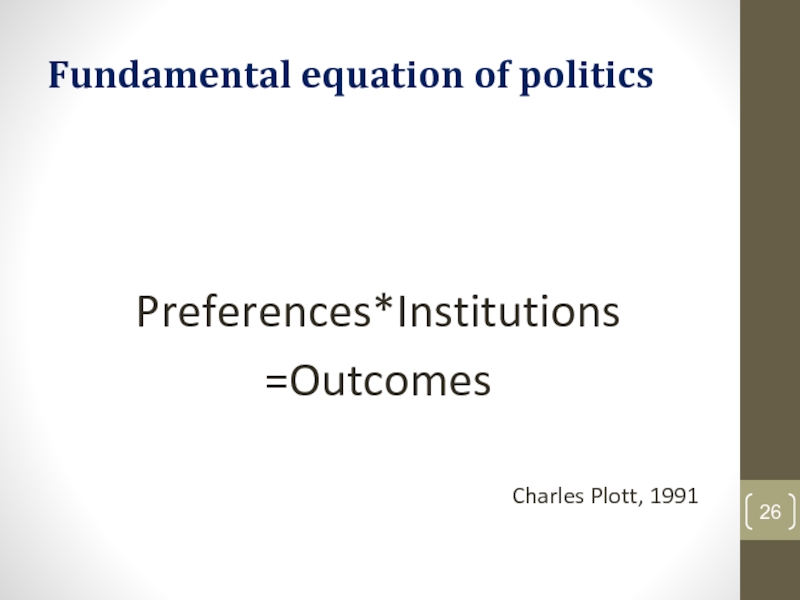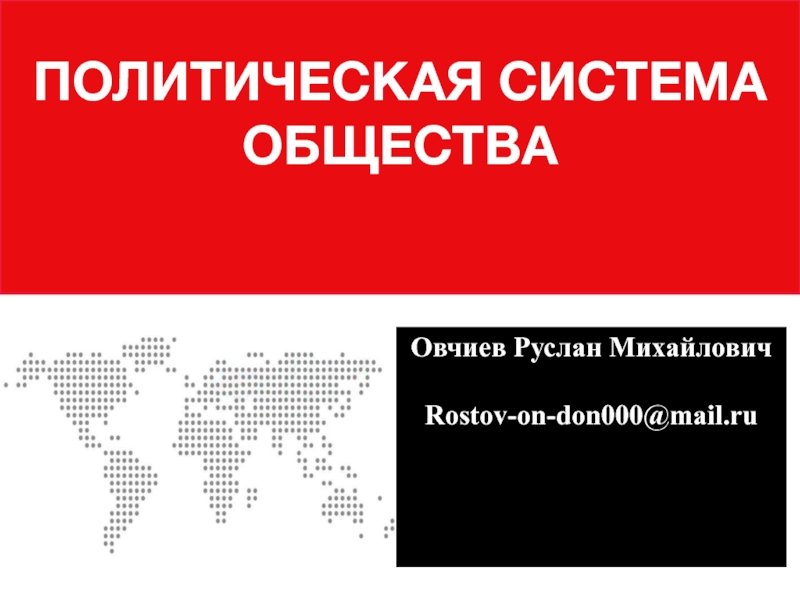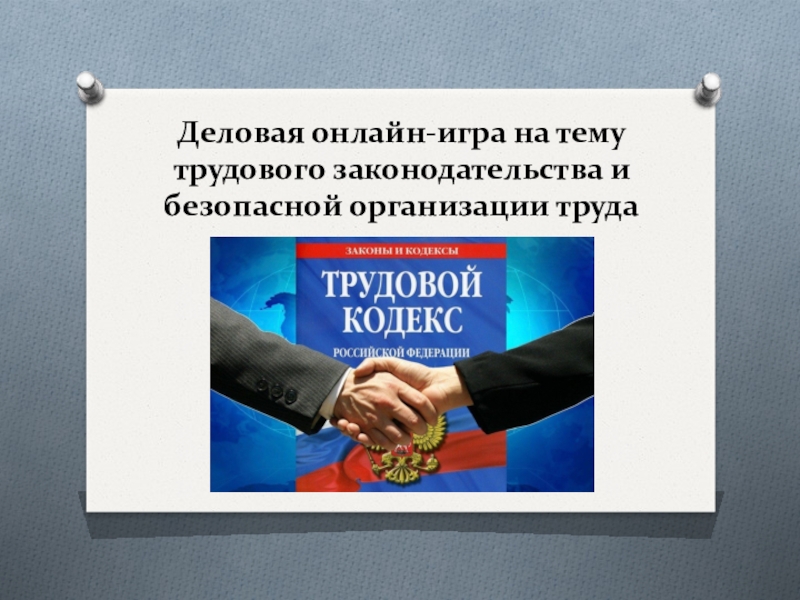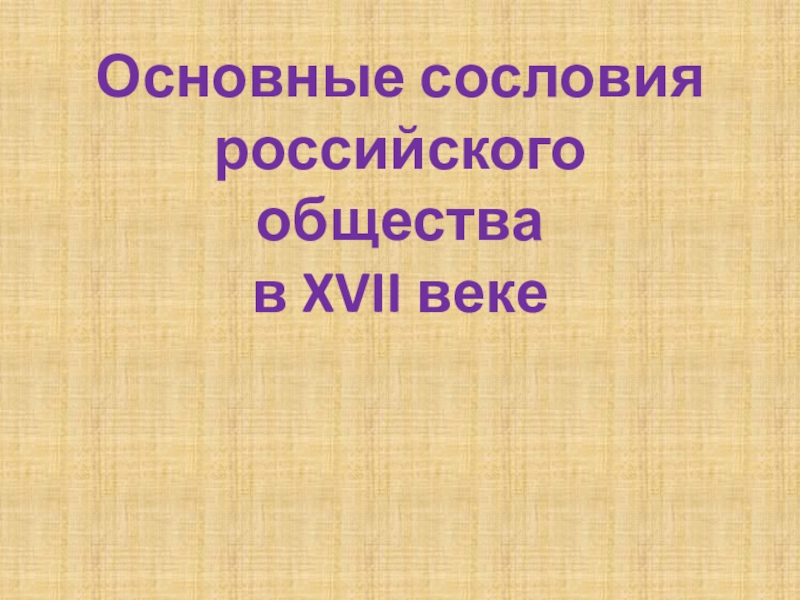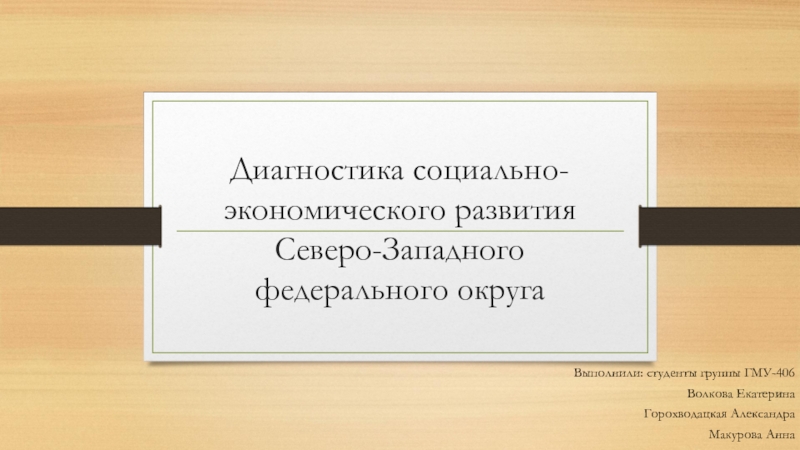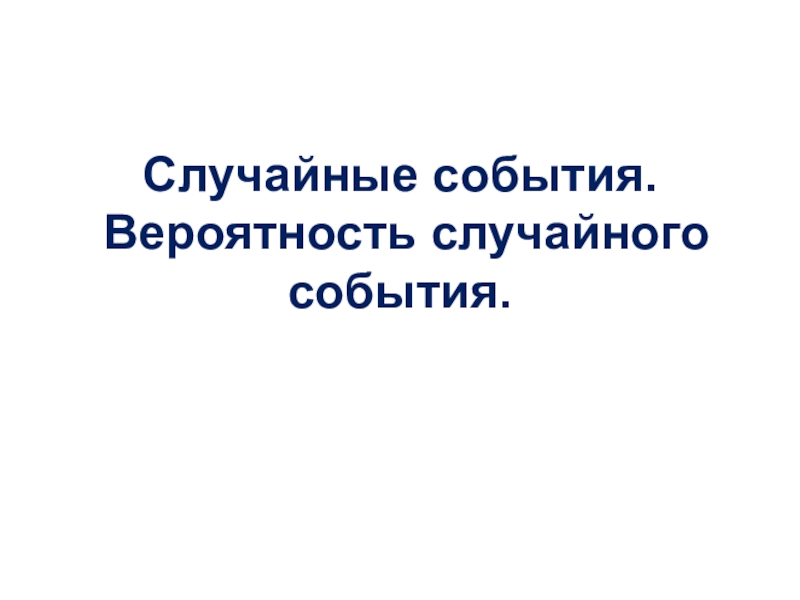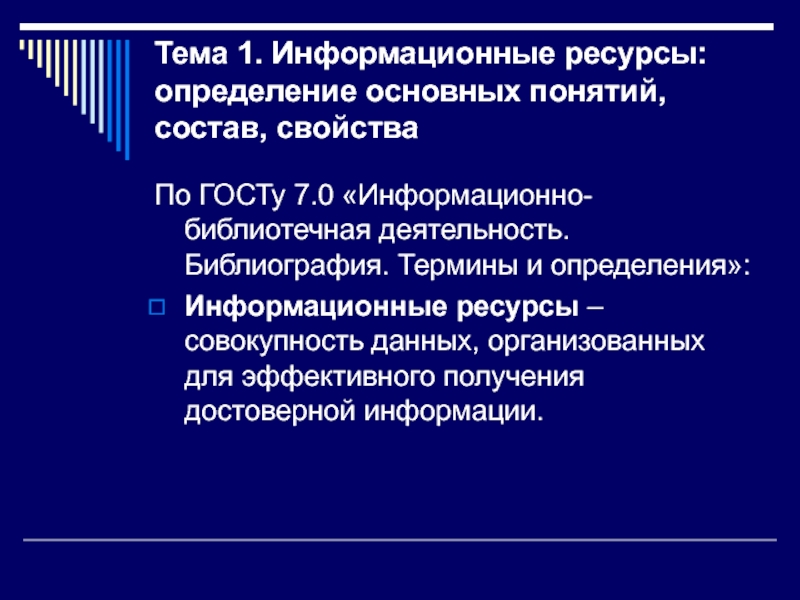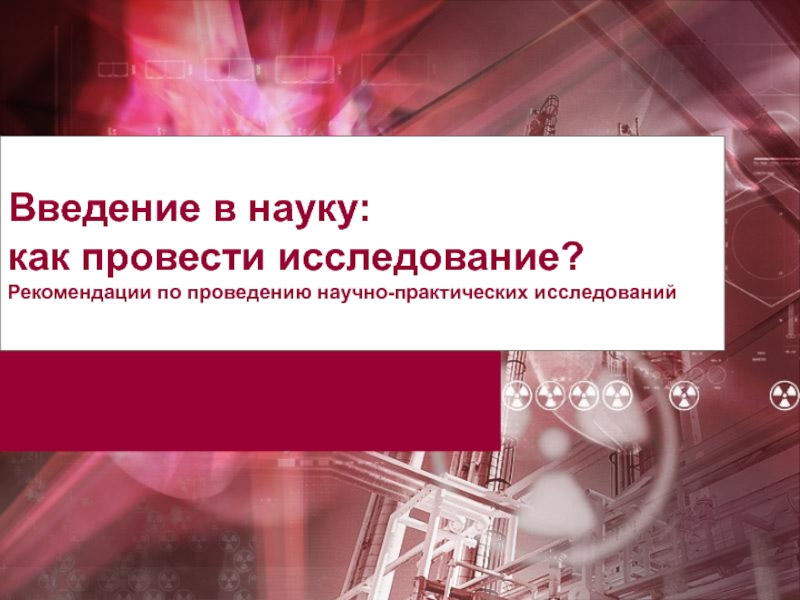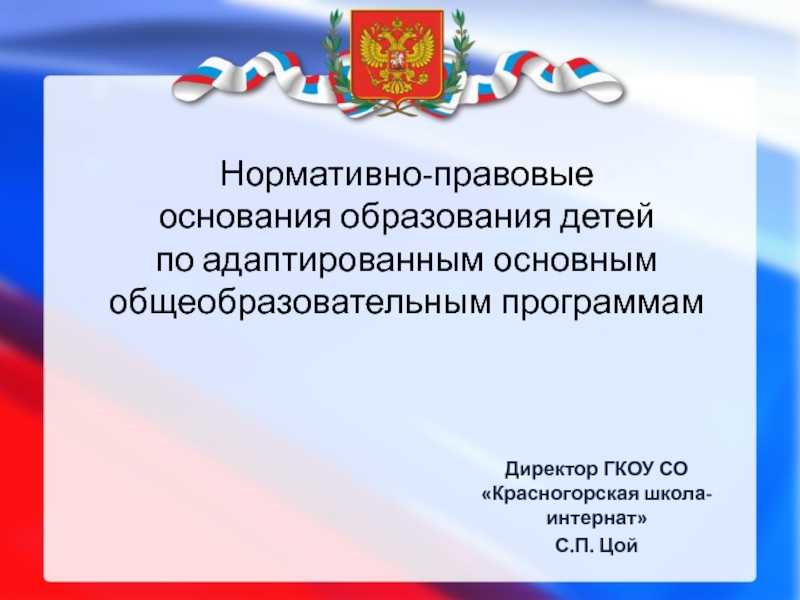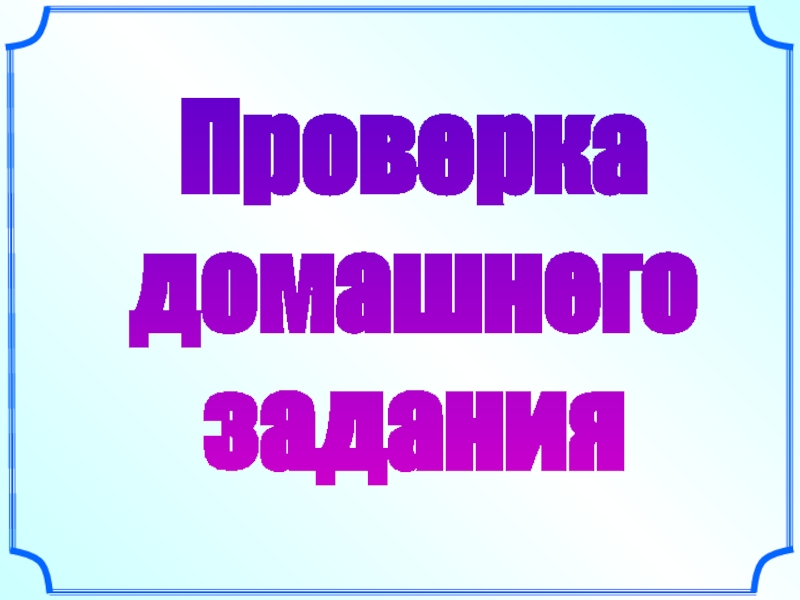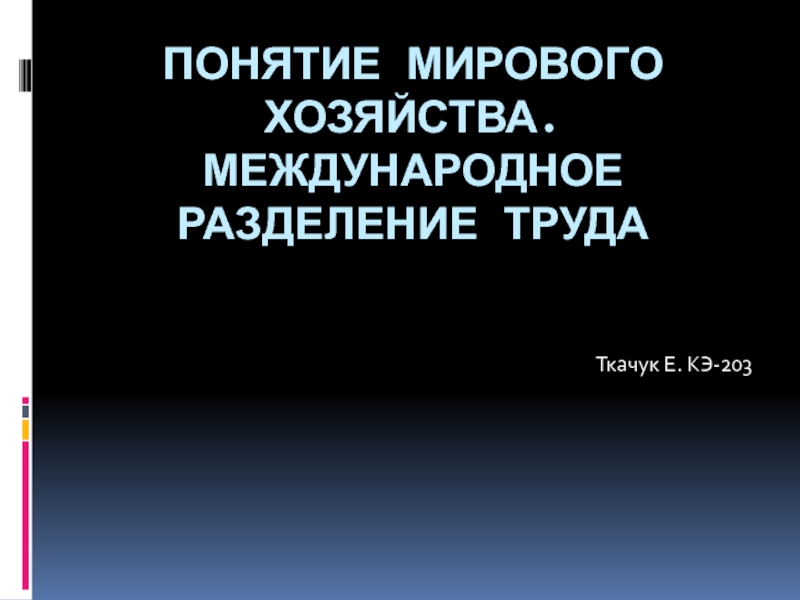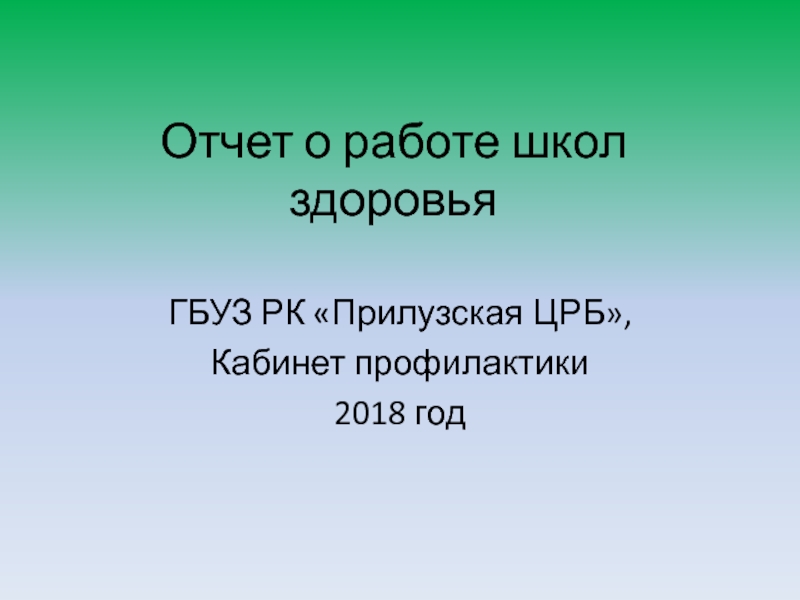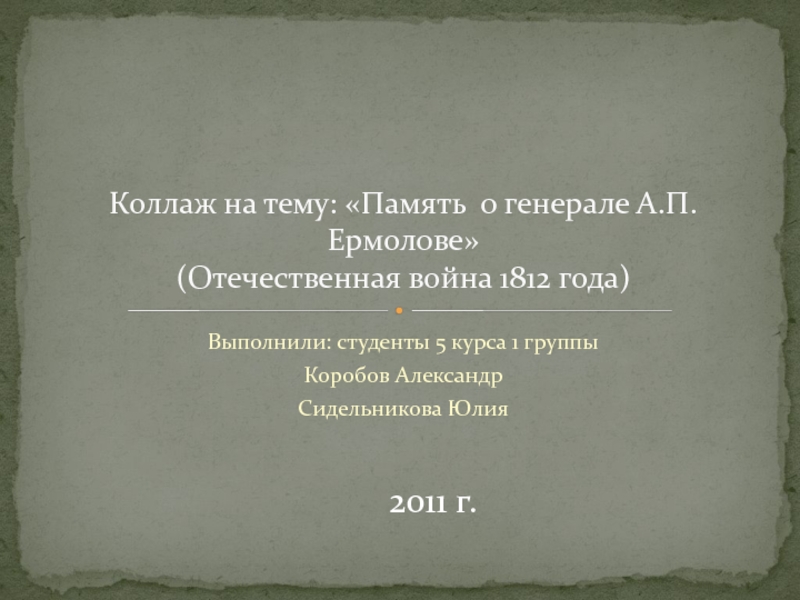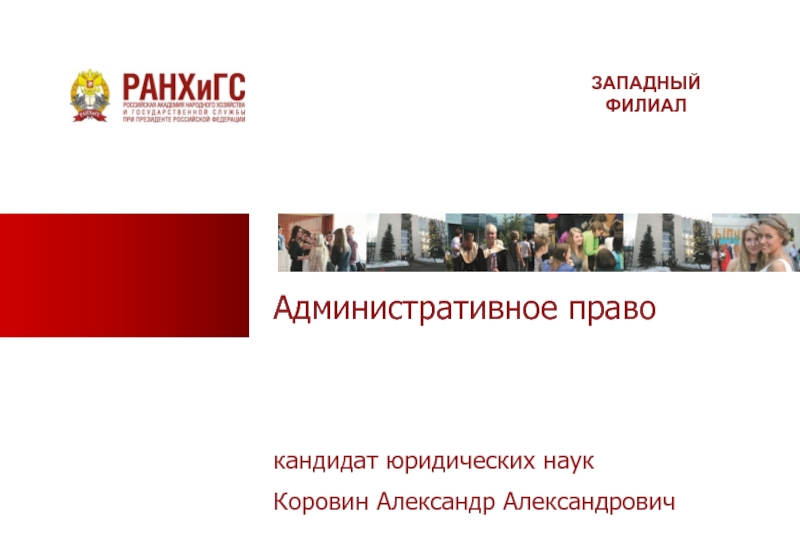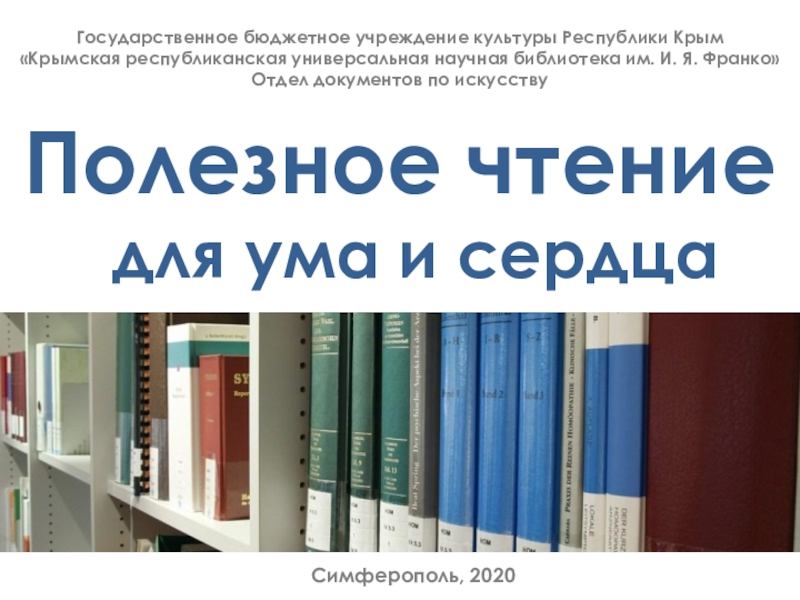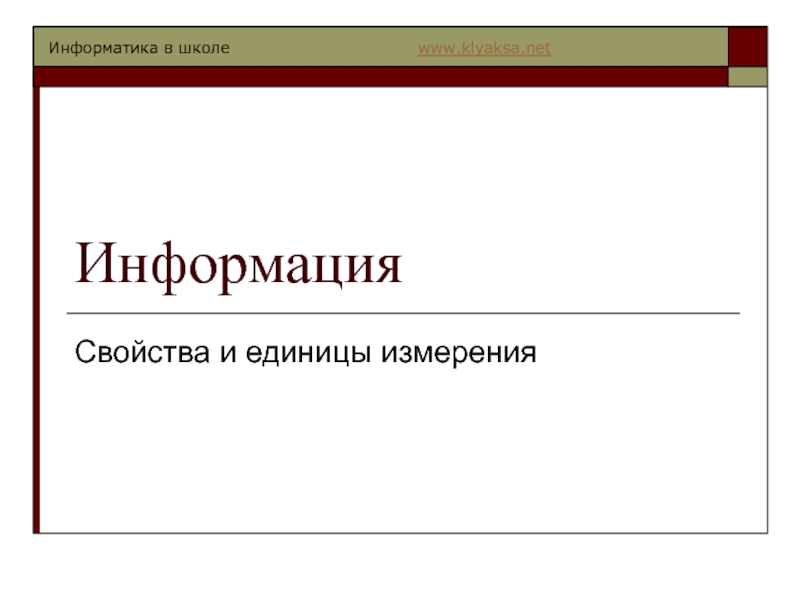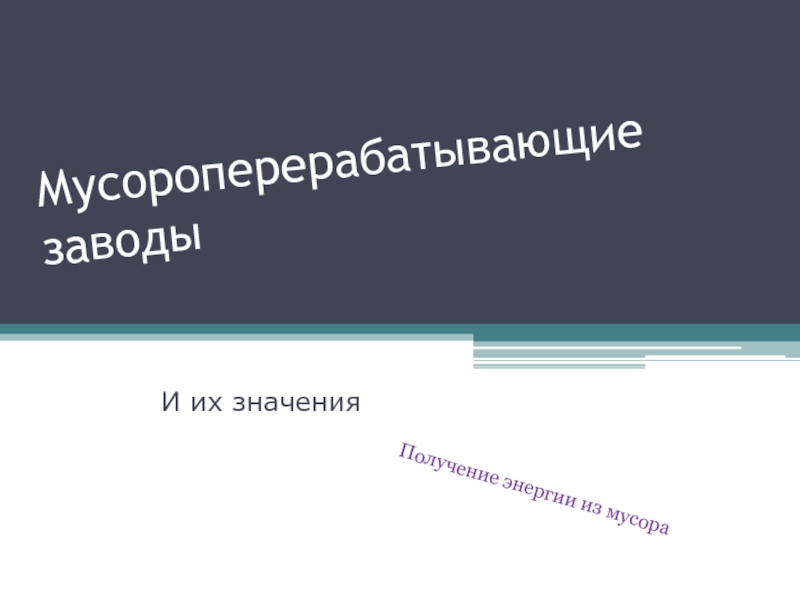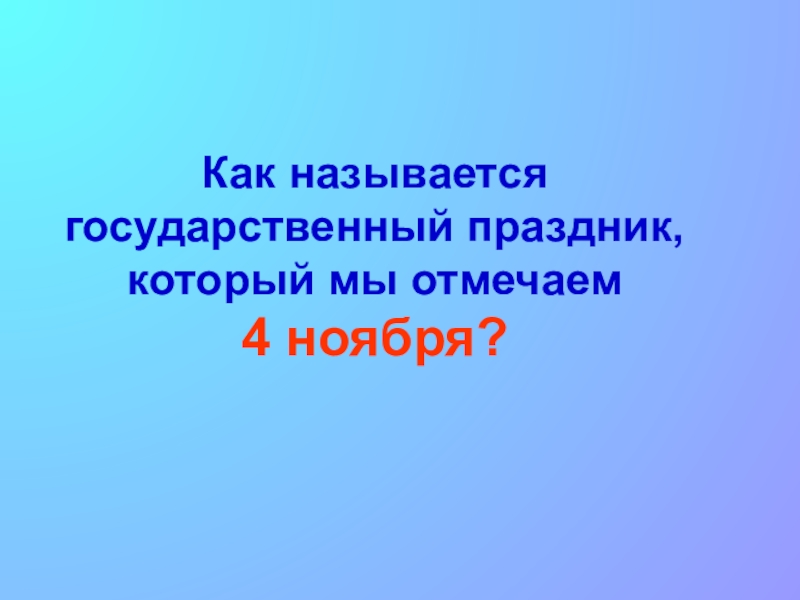Слайд 1Introduction to Political Science
Lectures 1 & 2
What is political science?
Слайд 2Fascinating world of politics
Trumpism, Brexit, right-wing populism – why now?
Cryptocurrencies
– a bubble?
Why democracies come and go?
Why revolutions? Why they
happen in one place, but not the other?
What are political parties?
Why in some countries political parties converge to the center, while in others – polarize?
Why some organizations are more successful lobbyists than others?
Why in some countries it takes 20 days to form government, while in others – 500?
Why some societies are rich and other - poor?
Слайд 3What is political science?
The systematic study of observable political phenomena
by developing theoretical explanations and testing these explanations (hypotheses) through
various empirical methods.
Theory – why?
Hypothesis – implication of theory?
Example:
Theory: democracy enhances economic development because its politicians are accountable
Hypothesis: all else equal, increase in democracy score leads to high economic growth
Слайд 4The history of the discipline
Politics as a separate area of
study
studied along with philosophy, history, law, sociology and economics
First political scientists - normative questions about ideal institutions, e.g. Is the German system of government better than the British?
Collapse of democracy in much of Europe in the 1920s and 1930s -> shift to behavior
Слайд 5Behavioral Revolution
The WWII and Cold War -> need for political
science analysis
Improvement in methods: use of more sophisticated empirical research
techniques
Against atheoretical, descriptive research
Слайд 6Behavioral Revolution
1940s and the 1960s
New data from opinion polls
Survey research techniques, interview methods, statistical analysis
Two traditions:
Rational choice
scholars: explain behaviour of voters, parties, interest groups, legislators or bureaucrats
Sociologists: social and cultural determinants of behaviour to explain formation of states, behaviour of political parties, stable democracies
Слайд 7New Institutionalism
1980s and early 1990s
Synthesis of two traditions:
How institutional
rules and procedures shape actors’ interaction is more nuanced than
formal models
Political institutions also shape culture and society
Слайд 8The modern political science ‘toolkit’
1.Political behavior: Beliefs and actions of
political actors, based on their interests and political preferences.
Who are
political actors? Citizens, voters, party leaders, members of parliaments, government ministers, judges, civil servants, or members of interest groups.
2.Political institutions: Structures within which political behavior takes place - such as governments, regimes, systems (presidential vs. parliamentary, federal vs. unitary etc)
3.Political outcomes: A broad range of issues, from specific policy outcomes such as economic growth or higher public spending or better protection of the environment, to broader political phenomena, such as political and economic equality, social and ethnic harmony, or satisfaction with democracy and government.
Слайд 9Approaches
in comparative politics
Слайд 11The rational choice theory
The method of economics in the study
of politics
A similar idea about state interests dates back many
years - rational choice applies this to individuals.
Basic assumptions of the theory:
An individual acts rationally in pursuit of their own self-interest. Individuals seek to maximize their gains and minimize their losses.
People respond to incentives.
An individual has sufficient information to establish their preferences.
Preferences are transitive. (If an individual prefers A over B, and B over C, then it logically follows that he prefers A over C.)
Слайд 12The main characteristics
1) Rationality assumption
“People make reasoned decisions to reach
their goals, irrespective of what their specific goals may be”
(McCubbins and Thies, p.3).
Rationality refers to pursuit of pleasure/happiness and avoidance of pain.
Behavior is instrumental. The goals do not have to be rational, but behavior does. It is an instrument in trying to reach these goals. So, the intent of behavior is important rather than its success, since people make mistakes.
People can rank their wants/needs: utility function/maximization.
Слайд 13The main characteristics
2) Component analysis
Simplification and abstraction are necessary to
understand complex phenomena.
Example: how natural resources affect autocrat’s survival
Tries to
capture the essential elements of the relationship. Ignores the trivial elements.
Uses spatial models - relative positioning of attitudes.
Слайд 14The main characteristics
3) Strategic behavior and games
The interaction between people
can alter their behavior accordingly.
People realize that other people’s behavior
will affect their pursuit of self-interest in the longer run. They cannot always act alone, because all others are also acting out of self-interest.
“Behavior that looks suboptimal in the short run is designed to accomplish a person’s objectives in the longer run”.
Слайд 15The prisoner’s dilemma
Players’ choices:
Two people are arrested who are suspected
of committing a crime and are interrogated separately.
Optimal outcome
– if both stay quiet
BUT: If Pl 1 stays quiet, and Pl 2 talks, Pl one is worse off!
Suboptimal outcome – both talk
Reiterated games when players know more about each other’s strategy (interaction) change the results
Слайд 16The prisoner’s dilemma
Even if each player individually acts rationally, the
collective outcomes is suboptimal.
Слайд 17Criticism against rational choice
The assumptions about people are wrong
People are
not always rational or self-interested. (Altruism - is it a
different form of self-interest?)
People do not work with perfect information. (Asymmetrical information and bounded rationality)
Does every individual act the same way under the same incentives? Can’t they alter their environment?
Poor empirical record, does not stand empirical testing
If interests shape institutions, why are institutions stable over time? Especially bad institutions?
Слайд 19Institutionalism
«Institutions are the rules of the game in a society
or, more formally, are the humanly devised constraints that shape
human interaction. In consequence they structure incentives in human exchange, whether political, social, or economic» (Doughlas North, 1990: p. 3).
Formal institutions matter
Veto players
Informal institutions matter– cultural norms, “logic of appropriateness”, fairness norms
Divide a dollar game: if Player 2 accepts the proposal, the money is divided between the two players as proposed by Player 1. But, if Player 2 rejects the proposal, neither player receives any money.
Path dependency
Слайд 20Traditional (old) institutionalism
One of the oldest approaches in the study
of politics. Concerns itself with formal rules, organizations and structures
of the government.
Focuses on historical narratives. Mainly descriptive, limited role for theorizing.
Critiques against old institutionalism (Peters 1999: 6-11)
Normative
Historicist
Legalist
Holistic
Слайд 21New institutionalism
From a focus on organizations to a focus on
rules: Political institutions are no longer equated with political organizations,
they are seen as a ‘set of rules’ that guide and constrain the behavior of actors.
From a formal to an informal conception of institutions: Informal rules/procedures can coexist with formal rules and influence the agents (e.g. taking money in Colombia specifically for robbers!).
From a static to dynamic conception of institutions: Institutions are processes. They are ‘sticky’, but the rules can change with the context and actor interests.
Слайд 22New institutionalism
From submerged values to a value-critical stance: Instead of
establishing values for a universal concept of “good government” ,
the focus is on identifying the societal values which shape and are shaped by institutions.
From a holistic to a differentiated conception of institutions: Instead of describing whole systems of government, new institutionalists focus on components. (e.g. electoral system, tax regime, cabinet decision-making, etc.)
From independence to embeddedness: Political institutions are embedded in context. They are not secluded from time and space.
Слайд 23Criticism against institutionalism
The definition of institution: Too broad? Non-falsifiable? What
are rules of the game?
Genesis and transformation of institutions: Where
do they come from? How do they change?
If institutions shape interests, why are they formed in the first place?
How do they change?
Are institutionalism and rational choice approaches compatible?
Слайд 24Rational Choice Institutionalism
Слайд 25Electoral College in the US
Formal body in the US to
elect President and VP
Number of electors in each state= Senate+House
of Representatives
“It was created to strengthen the agrarian elite, offer more federal power to slaveholding states, and counterbalance factionalism and polarization”
Americans moving to cities -> high distortion of votes
“Individual Wyoming vote weighs 3.6 times more than an individual Californian’s vote”
Katy Collin, 2016, Washington Post-Monkey Cage
Слайд 26Fundamental equation of politics
Preferences*Institutions
=Outcomes
Charles Plott, 1991
